| | 发布人: 王瀚颖 发布时间: 2017-04-20 浏览次数:  |
 | Workshop on Advances in Wireless Communications 2015
(WAWC 2015) | | | | | Welcome Messages | Welcome to Workshop on Advances in Wireless Communications 2015 (WAWC 2015). Date: 9:00 - 17:00 Thursday, July 9, 2015. Location: Conference hall, Yifu Science and Technology Museum, Southeast University, Nanjing, China. | | | | | Keynote Speakers This line will not be displayed because COLOR: white | 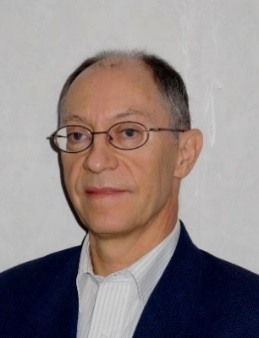
| Time: 9:30 - 10:20
Speaker: Prof. Alain Sibille (Telecom ParisTech, France)
Title: Joint antenna and radio channel statistical modeling for wireless networks and 5G
Abstract Wireless technologies are penetrating all human activities deeper and deeper as these technologies progress, become accepted and are even greedily demanded by societies and consumers. This generates a large variety of devices and use cases, in order to cope with vastly different requirements. Extremely simple, low-cost and low consumption connected objects of the internet of things (IoT) will be deployed, as well as further sophisticated multi-antenna / multi-band ultra high throughput smartphones or access points operating at hugely different frequencies . The radio link quality is, in all cases, dominated by the characteristics of the propagation channel and antennas. This can be translated into attenuations varying over many orders of magnitude, or other more refined performance related parameters. While the impact of the propagation has been studied in detail over several decades since the early GSM developments, much less has been done regarding terminals. Statistical channel models have been developed with increasing complexity, in order e.g. to account for wide bands or multiple antennas (MIMO). However, although the impact of antennas in their use context may degrade the link budget by tens of dB, the modeling of that part of the overall channel is in general very crude, surprisingly. In this presentation, we will address that problem and show how statistical models of antenna performance jointly with the propagation can be devised, intended to represent the variable “effective” performance of a radio link, whether it was for a very simple or a sophisticated device. Among the benefits of such models is the performance evaluation of competing physical layer schemes or device designs. Among the open questions is the trade-off between the representativeness/accuracy of the models and their complexity, which may harness the practical applicability of such models. Further perspectives of the approach towards future 5G networks will be discussed, either regarding the large variety of use cases, or the anticipated technology roadmap (such as mm wave spectral bands).
Biography: Alain Sibille graduated from Ecole Polytechnique (1977) and from Telecom-ParisTech (1979) in France and obtained the PhD/habilitation degree from University of Paris 7 in 1985. He first was with France-Telecom R&D until 1992, then moved to ENSTA-ParisTech where he chaired the EECS department until 2010. He is currently professor, vice-chair for research of the Communications & Electronics Department, and director of PhD programs at Telecom-ParisTech. His main expertise lies in the inter-relations between antennas, channels, and signal processing, especially through statistical modeling. He co-edited the book “MIMO: from theory to implementation”, Academic Press, 2010. He chaired the European Wireless Conference 2007 in Paris and is involved in a number of conference and research evaluation committees. He has been a national delegate in three European Cooperation Actions, including the steering committees of COST 2100 and the latest COST IC1004 Cooperative Radio Communications for Green Smart Environments. He is also serving URSI-France as Secretary General and regularly acts as expert for the Network Technologies Unit of the European commission. | | | | | 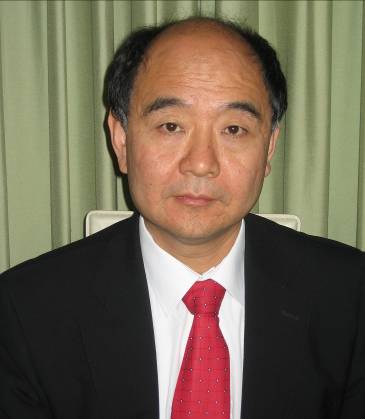 | Time: 10:20 - 11:10
Speaker: Prof. Y. Jay Guo (University of Technology Sydney, Australia)
Title: Massive Hybrid Antenna Arrays for 5G
Abstract Owing to the rapid proliferation of wireless communications systems and the increasing demand on mobile data, the limited electromagnetic spectrum has become more and more congested. To address this challenge, massive antenna arrays are emerging as an attractive solution for future millimeter wave (mm-wave) communications for 5G and beyond. A massive hybrid array consists of multiple analog sub-arrays, with each subarray having its digital processing chain. It offers the potential advantage of balancing cost and performance for massive arrays. On one hand, using beamforming analog subarrays such as phased arrays, the hybrid configuration can effectively collect or distribute signal energy in sparse mm-wave channels. On the other hand, multiple digital chains in the configuration provide multiplexing capability and more beamforming flexibility to the system. In this presentation, we will discuss several important issues and the state-of-the-art development for mm-wave hybrid arrays, such as channel modeling, capacity characterization, applications of various smart antenna techniques for single user and multi-user communications, and practical hardware design. We investigate how the hybrid array architecture and special mm-wave channel property can be exploited to design sub-optimal but practical massive antenna array schemes. We also compare two main types of hybrid arrays, interleaved and localized arrays, and recommend that localized array is a better option in terms of overall performance and hardware feasibility.
Biography: Professor Y. Jay Guo is a Fellow of the Australian Academy of Technological Sciences and Engineering (ATSE), a Fellow of IEEE and IET. Currently, he serves as the Director of Global Big Data Technologies Center (GBDTC), and Distinguished Professor at University of Technology Sydney (UTS). Prior this this appointment, Prof Guo served as Director of a number of research programs and labs in CSIRO, Australia. Before joining CSIRO, he led the development of 3G technologies in the European mobile communications industry for eight years, including Fujitsu, Siemens and NEC. His research interest includes reconfigurable antennas, wideband and conformal antenna arrays, base-station antennas and advanced high datarate wireless communications systems at mm-wave and THz frequencies. | | | | | 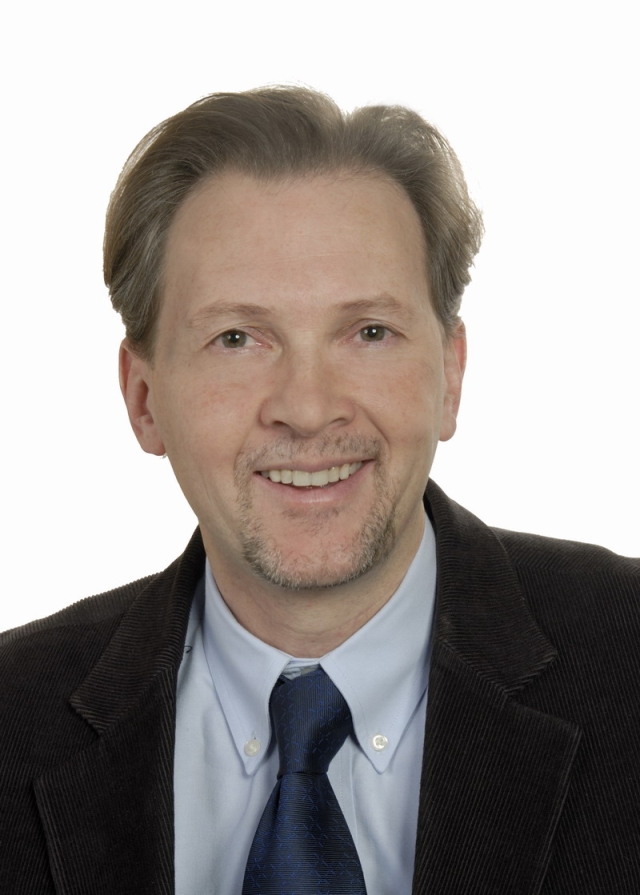 | Time: 11:10 - 12:00
Speaker: Prof. Constantinos B. Papadias (Athens Information Technology, Greece)
Title: Antenna Arrays with less RF Chains than Elements: An Emerging Technology for Multi-Antenna Wireless Systems
Abstract Antenna arrays have been long known as important enablers of advanced wireless communication, offering higher throughput and / or better performance for the same transmission power & bandwidth (especially via Multi-Input / Multi-Output (MIMO) transmission); better resilience to fading; better spatial resolution, etc. However, these benefits come at an increased cost in terms of the extra required hardware that involves a separate radio frequency (RF) chain for each antenna; the larger device size required for hosting the antenna arrays; and the higher circuit energy consumption required for the increased baseband processing. These challenges have kept the number of antenna elements at terminal devices to very small numbers and at the same time prevent the construction of Massive MIMO arrays, which constitute one of the most promising technologies for 5G wireless networks. In this talk we will review how an alternative technology, based on load-controlled antenna arrays, that typically involves parasitic elements and mixed analog / digital signal processing, can be used in order to provide the benefits of spatial processing, while using only a single or few RF chains, smaller array dimensions and simpler baseband processing. After introducing the main concept, we will review a number of representative techniques where such antenna arrays can be used for single and multi-user wireless transmission, as well as for spatially-enabled sensing. The energy savings provided with this approach will be also addressed. We will then show some designs and developed prototypes that target small devices such as femtocell access points, mobile phones and wireless sensor nodes, as well as some emerging designs for massive MIMO arrays.
Biography: Constantinos B. Papadias is the Dean of Athens Information Technology (AIT), in Athens, Greece, where he is also Professor, Head of its Broadband Wireless and Sensor Networks (B-WiSE) Research Group and Academic Director of its joint Doctoral Program with Aalborg University in Denmark. He received the Diploma of Electrical Engineering from the National Technical University of Athens (NTUA) in 1991 and the Doctorate degree in Signal Processing (highest honors) from the Ecole Nationale Supérieure des Télécommunications (ENST), Paris, France, in 1995. He was a researcher at Institut Eurécom (1992-1995), Stanford University (1995-1997) and Bell Labs (as Member of Technical Staff from 1997-2001 and as Technical Manager from 2001-2006). He was also Adjunct Professor at Columbia University (2004-2005) and Carnegie Mellon University (2006-2011). His research interests span several areas of advanced communication systems, with emphasis on wireless, cognitive, green and next generation networks. He has published over 150 papers, one research monograph, two edited books, 5 book chapters, and has received over 5000 citations for his work. He has also made standards contributions (most notably as the co-inventor of the Space-Time Spreading (STS) technique that was adopted by the cdma2000 wireless standard for voice transmission) and holds 12 patents. He was a member of the Steering Board of the Wireless World Research Forum (WWRF) from 2002-2006, a member and industrial liaison of the IEEE’s Signal Processing for Communications Technical Committee from 2003-2008 and a National Representative of Greece to the European Research Council’s IDEAS program from 2007-2008. He is currently a member of the IEEE Communications Society’s Fellow Evaluation Committee. He has served as Associate Editor for the IEEE Transactions on Signal Processing, the IEEE Transactions on Wireless Communications and the Journal of Communications and Networks. He has participated in several collaborative research efforts, including the recently awarded European Commission (Horizon2020 program) project SANSA in the area of satellite-assisted wireless backhauling and is currently the Technical Coordinator of two European Commission (7th Framework Program) research projects: HARP, in the area of remote radio heads, and ADEL, in the area of licensed shared access. His distinctions include the Bell Labs President’s Award (2002); a Bell Labs Teamwork Award (2003); the IEEE Signal Processing Society’s Young Author Best Paper Award (2003); ESI’s “most cited paper of the decade” citation in the area of wireless networks (2006); his recognition as a “Highly Cited Greek Scientist” (2011); and the co-authorship of two papers that earned Best Student Paper Awards at the IEEE International Conference on Bioinformatics and BioEngineering (2013 & 2014). He was a Distinguished Lecturer of the IEEE Communications Society for 2012-2013. Dr. Papadias is a Member of the Technical Chamber of Greece and a Fellow of IEEE. | | | | | 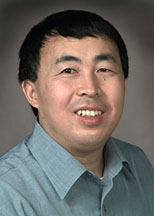 | Time: 13:30 - 14:20
Speaker: Prof. Xuemin (Sherman) Shen (University of Waterloo, Canada)
Title: MAC for Vehicular Communications Networks
Abstract The pervasive adoption of IEEE 802.11 radios in the past decade has made possible for the easy Internet access from a vehicle, notably drive-thru Internet. However, originally designed for the static indoor applications, the performance of IEEE 802.11 in the outdoor vehicular environment is still unclear especially when a large number of fast-moving users transmitting simultaneously. In this talk, we first introduce the Vehicular Communications Networks (VANET), its applications and design issues. We then discuss on the throughput performance of medium access control (MAC) in drive-thru Internet scenario. Due to the high mobility and transient connectivity of vehicles, we show that the DCF MAC should be adaptively adjusted according to the vehicle velocities for improving throughput performance. In addition, we will present VeMAC, a novel networking protocol designed to support advanced road safety applications via wireless communications among vehicles driving nearby each other, or among vehicles and especially deployed road-side units. The presentation includes videos of computer simulations, Lab experiments, and on-road demonstrations using real vehicles, which are conducted to highlight the efficiency of VeMAC and its potential to enhance the safety standards of future cars.
Biography: Xuemin (Sherman) Shen is a Professor and University Research Chair, Department of Electrical and Computer Engineering, University of Waterloo, Canada. Dr. Shen's research focuses on wireless resource management, wireless network security, wireless body area networks, smart grid and vehicular ad hoc and sensor networks. He is the Editor-in-Chief of IEEE Network, and IET Communications. He serves as the General Chair for Mobihoc'15, the Technical Program Committee Chair for IEEE Infocom’14, IEEE VTC'10, the Symposia Chair for IEEE ICC'10, the Tutorial Chair for IEEE ICC'08, the Technical Program Committee Chair for IEEE Globecom'07, the Chair for IEEE Communications Society Technical Committee on Wireless Communications. Dr. Shen is an elected member of IEEE ComSoc BoG, the chair of IEEE ComSoc Distinguish Lecturer selection committee, and a member of IEEE ComSoc Fellow evaluation committee. Dr. Shen received the Excellent Graduate Supervision Award in 2006, and the Outstanding Performance Award in 2004, 2007, and 2010 from the University of Waterloo, the Premier's Research Excellence Award (PREA) in 2003 from the Province of Ontario, Canada. Dr. Shen is a registered Professional Engineer of Ontario, Canada, an IEEE Fellow, an Engineering Institute of Canada Fellow, a Canadian Academy of Engineering Fellow, and a Distinguished Lecturer of IEEE Vehicular Technology Society and Communications Society. | | | | | 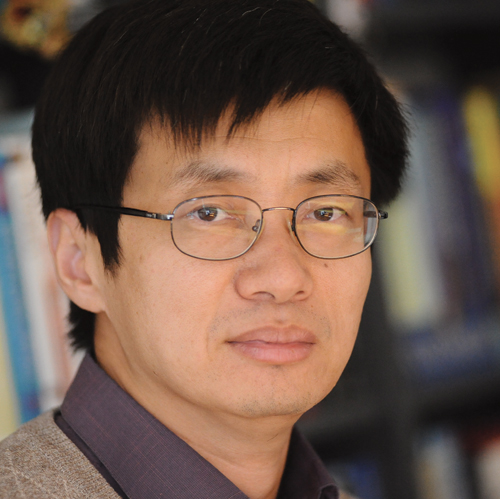 | Time: 14:20 - 15:10
Speaker: Prof. Xiaodong Wang (Columbia University, USA)
Title: Energy-harvesting Communications
Abstract Energy harvesting opens up new exciting possibilities in wireless communication and networking by enabling energy self-sufficient, energy self-sustaining environmentally friendly operation with practically infinite lifetimes, untethered mobility, cooperation at signal and energy levels. We first discuss the information theoretic aspects of energy-harvesting communications and provide upper and lower bounds on the capacity of a point-to-point system where the transmitter is powered by an energy arrival process and is equipped with a battery of finite capacity. These bounds are shown to be within a constant gap for some cases. We then discuss resource allocation for energy harvesting wireless communications in fading channels, under the constraints of finite battery capacity and maximum transmission power. Optimal schemes for single-user transmit energy scheduling, and for multiuser joint transmit energy and bandwidth scheduling are presented, for both non-causal and causal knowledge of energy harvesting and the channel.
Biography: Xiaodong Wang received the Ph.D degree in Electrical Engineering from Princeton University. He is a Professor of Electrical Engineering at Columbia University in New York. Dr. Wang’s research interests fall in the general areas of signal processing and communications, and has published extensively in these areas. Among his publications is a book entitled “Wireless Communication Systems: Advanced Techniques for Signal Reception”, published by Prentice Hall in 2003. His current research interests include wireless communications, statistical signal processing, and genomic signal processing. Dr. Wang received the 1999 NSF CAREER Award, the 2001 IEEE Communications Society and Information Theory Society Joint Paper Award, and the 2011 IEEE Communication Society Award for Outstanding Paper on New Communication Topics. He has served as an Associate Editor for the IEEE Transactions on Communications, the IEEE Transactions on Wireless Communications, the IEEE Transactions on Signal Processing, and the IEEE Transactions on Information Theory. He is a Fellow of the IEEE and listed as an ISI Highly-cited Author. | | | | |  | Time: 15:20 - 16:10
Speaker: Prof. Jae Hong Lee (Seoul National University, Korea)
Title: Relaying and Cognitive Radio for Wireless Communications
Abstract Mobile data traffic is growing rapidly as the number of smart devices, such as smartphones and tablets, increases. To meet the quality of service (QoS) for them, it requires higher reliability and spectral efficiency in next generation wireless communications. Relaying and cognitive radio are candidate technologies to achieve them. Relaying improves reliability by providing additional paths for data transmission. It has been adopted in the standards of wireless cellular networks such as LTE-Advanced and WiMAX2. Cognitive radio improves spectral efficiency in which an unlicensed user utilizes the spectrum of a licensed user opportunistically. It has been adopted in the standard of wireless regional area network (WRAN) such as IEEE 802.22. In the first part of the talk, the concept of relaying and cognitive radio for wireless communications is introduced. The second part consists of some research results: a new transmission protocol for multi-hop networks and its performance, and the performance analysis of cooperative spectrum sensing cognitive radio with multiple quantization levels.
Biography: Jae Hong Lee received BS and MS degrees from Seoul National University, Korea, and Ph.D. from the University of Michigan at Ann Arbor in 1986. He was with AT&T Bell Laboratories as Member of Technical Staff from 1991 to 1992. He joined Seoul National University in 1987 for which he is currently a professor and served as Associate Dean of College of Engineering, Director of Institute of New Media and Communications, and Chairman of EECS Department. His research activities are in physical layer wireless communications such as MIMO, OFDM, cooperative diversity, and cognitive radio, and their applications to B4G/5G wireless systems. He served as chairman of the committee for coordination of 3G wireless communication technology development in Korea and was principal investigator in communications for ITS Grand Design Project of the Korean government. His laboratory was designated as a National Leading Research Laboratory by Ministry of Science and Technology of Korea. He was President of the Korean Society of Broadcast Engineers, the Institute of Electronics Engineers of Korea, and the IEEE Vehicular Technology Society. He is an IEEE Fellow and IEEE VT Society Distinguished Lecturer. He is a member of the National Academy of Engineering of Korea and the Korean Academy of Science and Technology. | | | | | 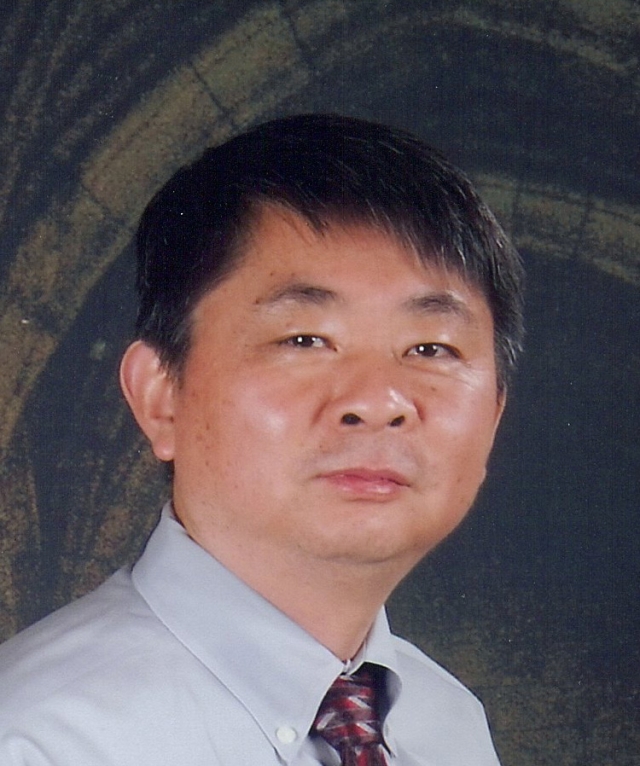 | Time: 16:10 - 17:00
Prof. Geoffrey Li (Georgia Institute of Technology, USA)
Title: Device-to-Device Communications in Cellular Networks
Abstract To satisfy the increasing demand of high data-rate services, provide better user experience, and alleviate the huge infrastructure investment of operators, device-to-device (D2D) communications have being considered as one of the key techniques in the 5G wireless networks. With D2D communications, proximity users in a cellular network can communicate directly to each other without going through the base station (BS). It can potentially increase spectral-efficiency (SE) and device energy-efficiency (EE) of communications. However, D2D communications may generate interference to the existing cellular network if not designed properly. Therefore, interference management is one of the most challenging and important issues in D2D communications. This talk will focus on interference management in D2D communications including quality-of-service (QoS) aware admission control and SE/EE based mode selection. Cross-layer optimization and concave-convex procedures (CCCP) are exploited to solve the related optimization problems.
Biography: Dr. Geoffrey Li is a Professor with the School of Electrical and Computer Engineering at Georgia Institute of Technology. He is also holding a Cheung Kong Scholar title at the University of Electronic Science and Technology of China since 2006. He was with AT&T Labs – Research for five years before joining Georgia Tech in 2000. His general research interests include wireless communications and statistical signal processing. In these areas, he has published over 300 referred journal and conference papers in addition to 26 granted patents. His publications have been cited around 20,000 times and he has been listed as the World’s Most Influential Scientific Mind, also known as a Highly-Cited Researcher, by Thomson Reuters. He has been an IEEE Fellow since 2006. He received the Stephen O. Rice Prize Paper Award in 2010 and the WTC Wireless Recognition Award in 2013 from the IEEE Communications Society and the James Evans Avant Garde Award in 2013 and the Jack Neubauer Memorial Award in 2014 from the IEEE Vehicular Technology Society. Recently, he won 2015 Distinguished Faculty Achievement Award from the School of Electrical and Computer Engineering, Georgia Tech. |
|
| |

